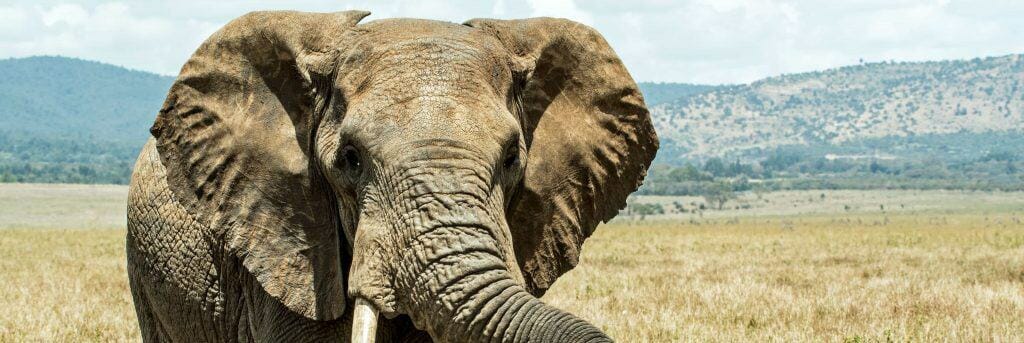
Table of Contents
Elephants are the largest living animals on land. The three known species are the African bush elephant, the African Forest elephant and the Asian elephant. The African bush elephants are by far the largest, growing up to 3.36 m tall and weighing up to 6,914 kg.
The African elephants are quite distinct in appearance from the Asian elephants. African elephants tend to be physically larger (weighing 4,000-7,500kg), with larger ears and concave backs. Asian elephants tend to be smaller (weighing 3000-6,000kg), with smaller ears and convex backs. African elephants also have full, rounded heads with a single dome at the top of their head. Asian elephants, meanwhile have twin-domed heads with a middle indentation.
Elephants usually live in the savannahs, forests and deserts, and have distinctive features such as their tusks, trunks and large ears as an adaptation to these environments.
Elephant Trunk
The trunk of elephants has evolved from the fused muscles of their nose and upper lips, and contains up to 150,000 separate muscles. These muscles provides flexibility and motion for such functions as feeding and grasping objects. It also provides strength to the trunk, allowing it to lift substances that weigh up to 350kg. The trunk is also capable of holding up to 10L of water. The trunk is useful for spraying water all over the body of the elephant as a means to cool down, or to spray sand over the skin after a bath so as to protect the skin.
The trunk is covered with fine sensory hairs. This provides a sense of smell that is four times as sensitive as that of a bloodhound. This allows elephants to locate water sources and to sense the reproductive state of other elephants over long distances. Thus, elephants are able to locate prospective mating partners in the vicinity.
African elephants have two finger-like extensions at the tips of their trunks to grasp objects, while Asian elephants only have one finger-like extension and can therefore only use their trunk to scoop objects up by wrapping it around the object.
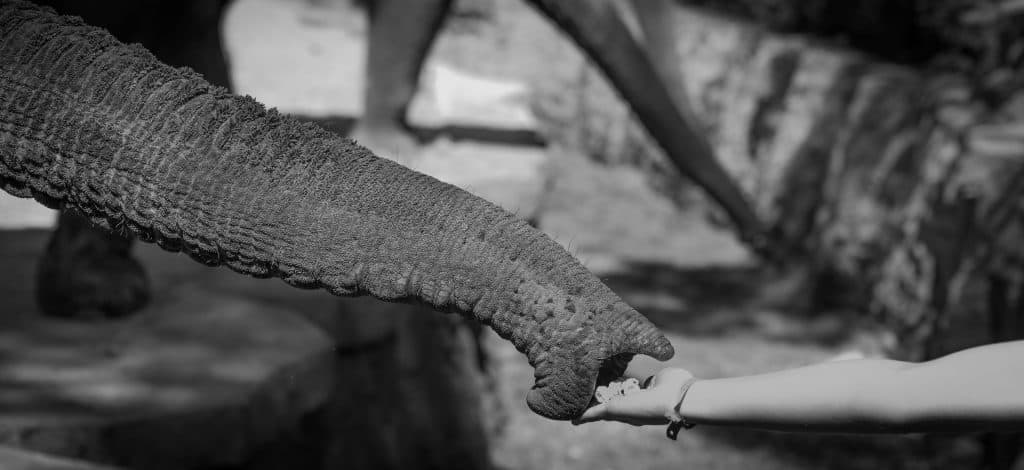
Elphant Tusks
The tusks of elephants are elongated forms of incisor teeth in their upper jaw. They are present in both male and female African elephants, but only in the males of Asian elephants. The tusks of Asian elephants are also thinner and lighter than that of African elephants. Female Asian elephants generally have very small tusks, if any.
The tusks grow at a rate of approximately 17cm a year, and therefore the length of the tusk can serve as an indicator of an elephant’s age. Two-thirds of the tusk are visible on the outside, while the remaining one-third are hidden within the skull. Elephants can be either ‘left’ or ‘right’ tusked in a way similar to the way humans are left or right handed. The dominant tusk is generally more worn down than the other tusk.
The tusks are generally used for digging to locate water sources, removing the bark from trees, carrying heavy objects and as a weapon for attack and defense.
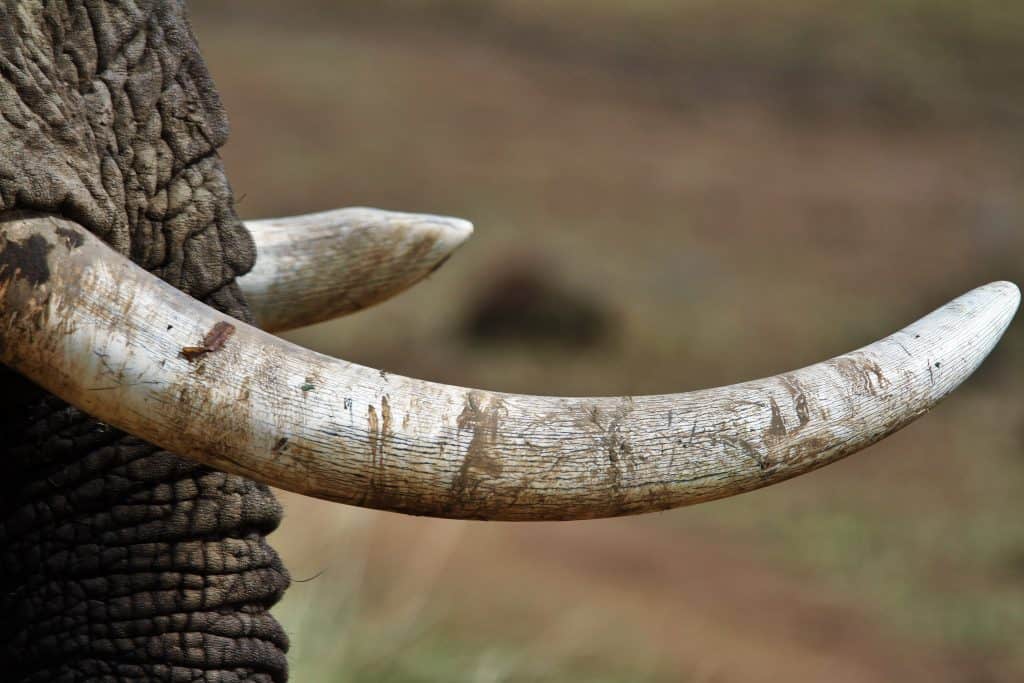
Elephant Ears
Another distinguishing feature of elephants is their large ears, with the ears of African elephants being at least 3 times as large as that of the Asian elephant. This enables them to hear sounds of very low frequencies (far below the hearing range of the human ear). These low frequencies enable elephants to communicate over large distances, e.g. to signal impending danger.
Their ears are also used to regulate their body temperature, as the ear flaps contain multiple blood vessels. Excess body heat is released into the environment when blood flows into these capillaries. Elephants flap their ears to enhance this process in two ways, by moving the air over the elephant’s body, and by cooling the blood circulating through the veins. This helps to lower their body temperature by up to 10 degrees celsius.
African elephants live in hotter savannah areas, while Asian elephants live in cooler jungles. Thus, African elephants have larger ears which are better at dissipating heat than Asian elephants.
The ear folds of elephants also increase in size with age, thus serving as another indicator of an elephant’s age.
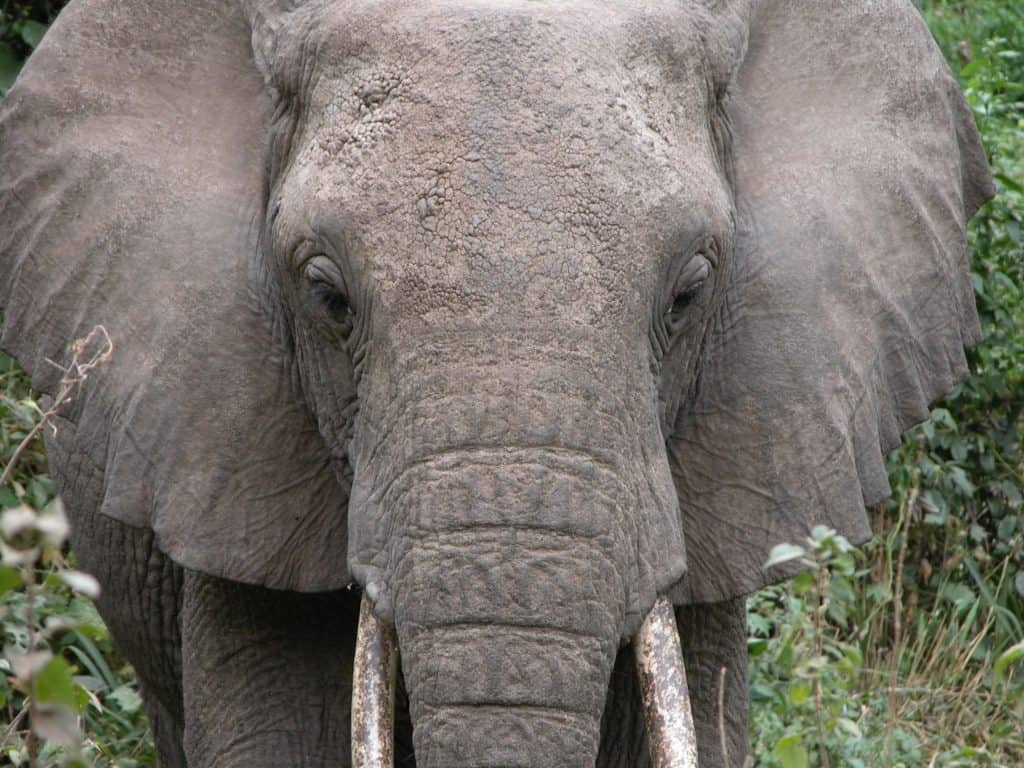
Elephant Skin
African elephants usually have darker skin that appears brown or reddish in colour whereas Asian elephants are lighter in colour and appear greyish. Asian elephants also have finer skin than African elephants.
The skin of elephants have a rich nerve supply and are therefore highly sensitive. Thus, it is usually covered in dust, soil or mud to prevent insect bites, moisture loss and damage from ultraviolet radiation. Elephants lack sweat glands, thus they spend a lot of time in the water or mud as a way to cool down. It was also recently discovered that elephants have ‘hot spots’ that help in heat dissipation. These are small patches of skin distributed around the body of the elephant. By directing their blood supply to the surface of these areas, heat can be dissipated rapidly.
The wrinkles found on the skin of elephants, meanwhile, serve to increase the surface area of the skin such that more of the skin is wet when an elephant is bathing in water. The wrinkles also help to trap the water so that it takes longer to evaporate, thus keeping the elephants cooler for longer than if they had smoother skin.
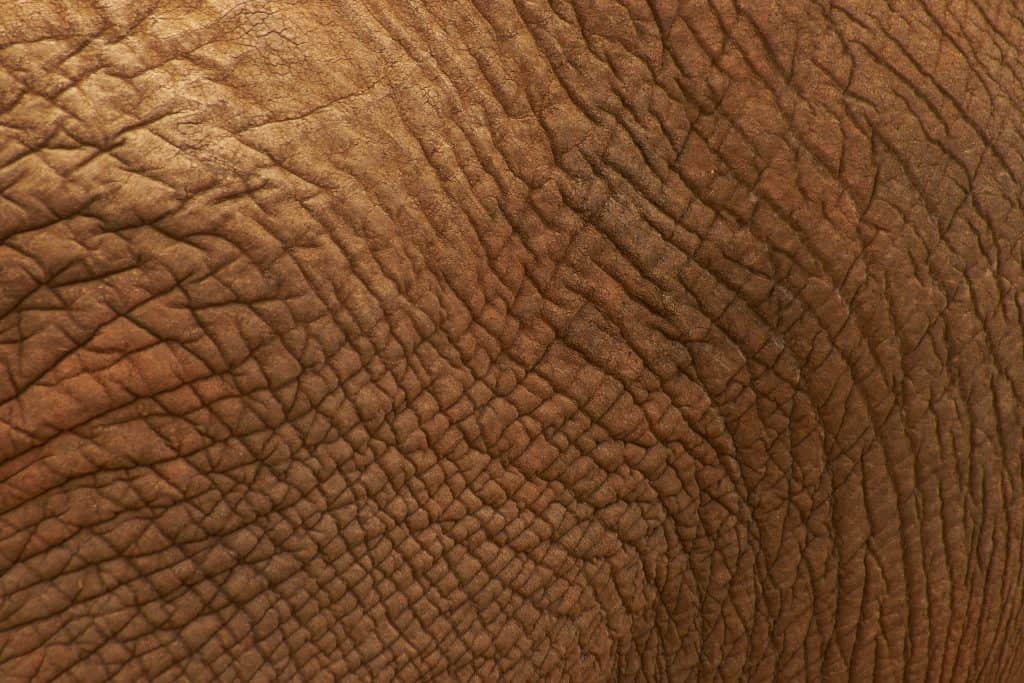
Elephant Teeth
Elephant teeth are the largest among the mammals. How many teeth does an elephant have? They have a total of 24 teeth, which includes 12 molars and 12 deciduous premolars. Unlike other mammals, where the teeth are produced from the top to the bottom of the mouth, elephant teeth move from the back of the jaw towards the front akin to a conveyor belt. As the front teeth are worn through constant grinding, they are replaced by new teeth from the back. Only four molars are in use at any one time. Interestingly, the leading cause of death of mature elephants is starvation as their teeth are worn down and they are no longer able to process any food.
Both the Asian and African elephants have ridges along their teeth that allows for back and forth movements of the jaw during chewing. Asian elephants have parallel ridges that are suited for their diet of shrubs, glasses and bark in forests. African elephants, meanwhile, have diamond shaped ridges that are more suited for the plains where they reside.
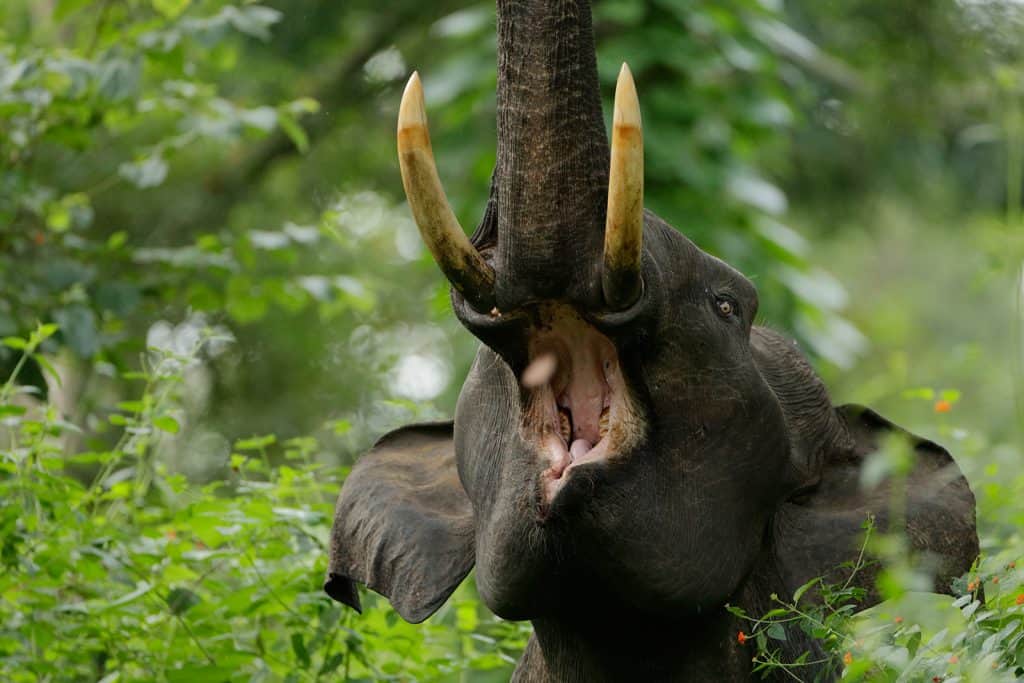 PramodCL [CC BY-SA 4.0 (https://creativecommons.org/licenses/by-sa/4.0)]
PramodCL [CC BY-SA 4.0 (https://creativecommons.org/licenses/by-sa/4.0)]